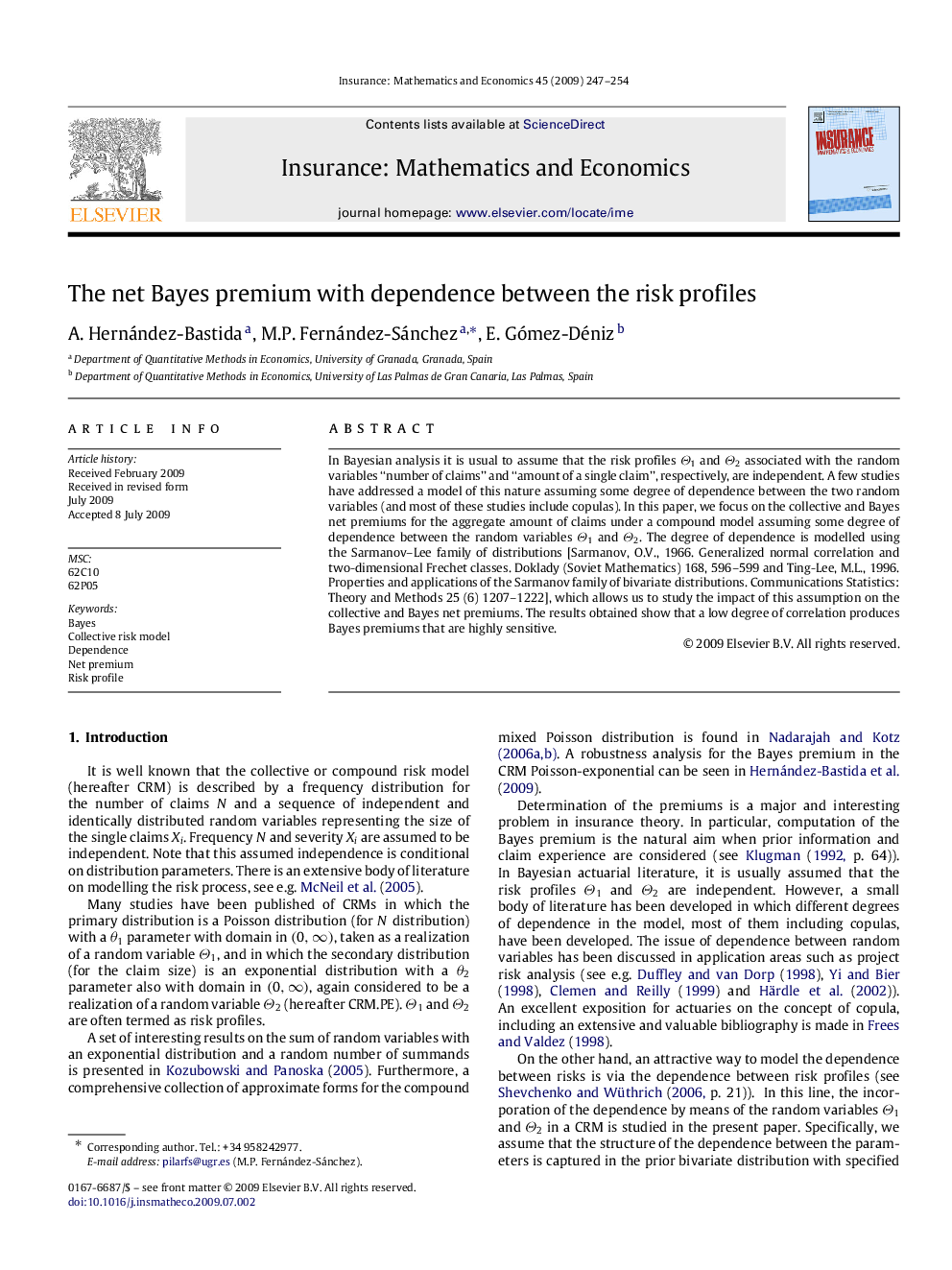| Article ID | Journal | Published Year | Pages | File Type |
|---|---|---|---|---|
| 5077062 | Insurance: Mathematics and Economics | 2009 | 8 Pages |
Abstract
In Bayesian analysis it is usual to assume that the risk profiles Î1 and Î2 associated with the random variables “number of claims” and “amount of a single claim”, respectively, are independent. A few studies have addressed a model of this nature assuming some degree of dependence between the two random variables (and most of these studies include copulas). In this paper, we focus on the collective and Bayes net premiums for the aggregate amount of claims under a compound model assuming some degree of dependence between the random variables Î1 and Î2. The degree of dependence is modelled using the Sarmanov-Lee family of distributions [Sarmanov, O.V., 1966. Generalized normal correlation and two-dimensional Frechet classes. Doklady (Soviet Mathematics) 168, 596-599 and Ting-Lee, M.L., 1996. Properties and applications of the Sarmanov family of bivariate distributions. Communications Statistics: Theory and Methods 25 (6) 1207-1222], which allows us to study the impact of this assumption on the collective and Bayes net premiums. The results obtained show that a low degree of correlation produces Bayes premiums that are highly sensitive.
Related Topics
Physical Sciences and Engineering
Mathematics
Statistics and Probability
Authors
A. Hernández-Bastida, M.P. Fernández-Sánchez, E. Gómez-Déniz,
